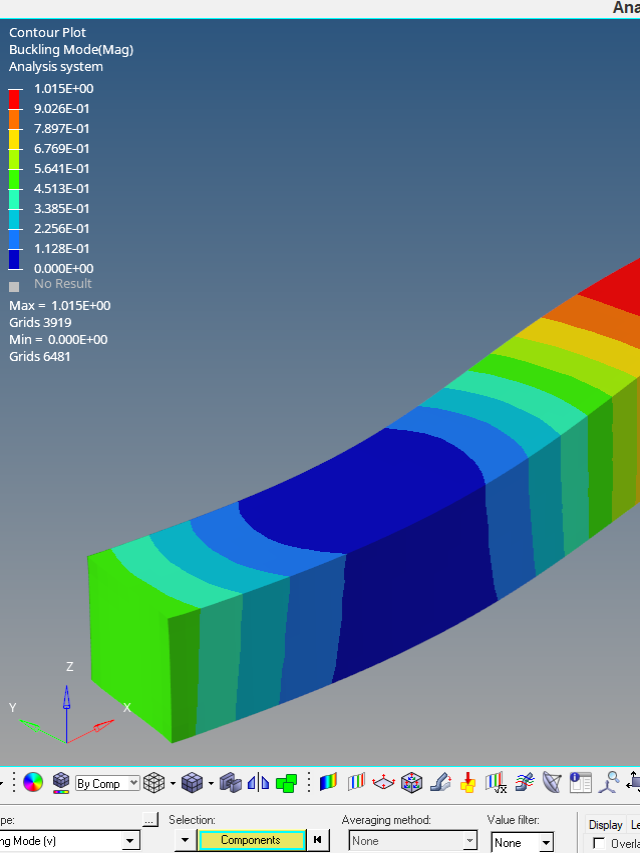In this post, we will learn and perform a linear buckling analysis in Hypermesh.
So we will be starting with knowing what buckling analysis is, preparing a model to use, applying boundary conditions, and then performing modal analysis, and finally comparing the results. Before diving into the tutorial, we need to get familiar with some terms.
This tutorial will be largely similar to the Optistruct tutorial; the main difference will be in the solver section.
What is Buckling?
Buckling, by definition, is sudden deformation in the component or structure under compression when the compression load reaches a certain critical value. This critical buckling load is calculated using Euler’s buckling formula, which uses Young’s modulus, second moment of area, and the effective length of the component. You can read more about buckling here.
Performing Buckling Analysis
For this tutorial, we will use a rectangular column under compression load to perform a buckling analysis.
Meshed Column Model
For this tutorial, I have used an 8 mm x 8 mm x 80 mm column. I have used the Hexa element to mesh the column.
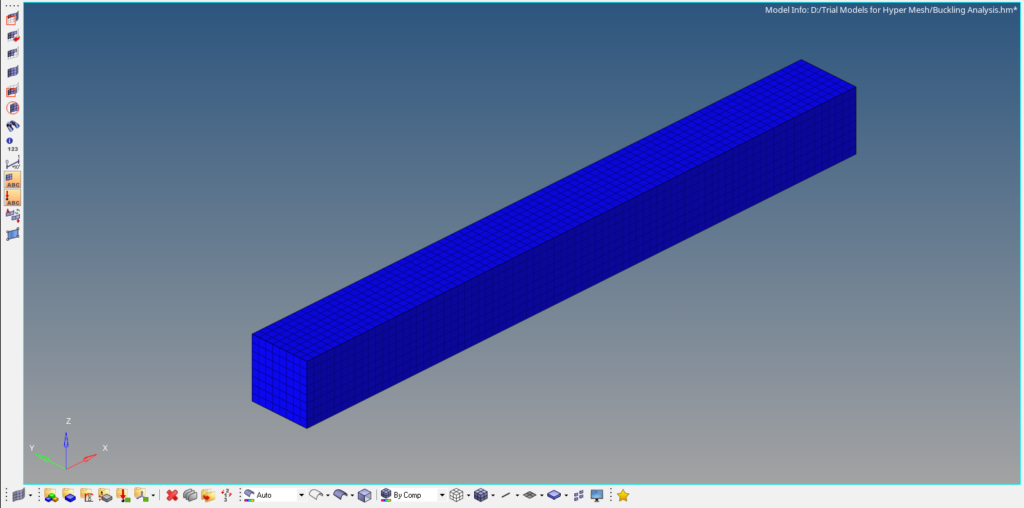
Boundary Condition
To apply boundary conditions, we need to create load collectors. We will first create a load collector named Fixed_support and fix all the degrees of the bottom face of the column. To create this, we can go to Analysis -> Constraints. Now we will create a load collector named Load and apply the load on the top face of the column. We will keep the load value as 5600 KN.
Then we need to create a load collector EIGRL with having card image as EIGRL. This load collector is used to extract the modes of buckling for the column. To create a new load collector, we can right-click on the white browser area, then go to Create -> Load Collector. If you want to understand more about mode,s you can read this post here on Modal Analysis.
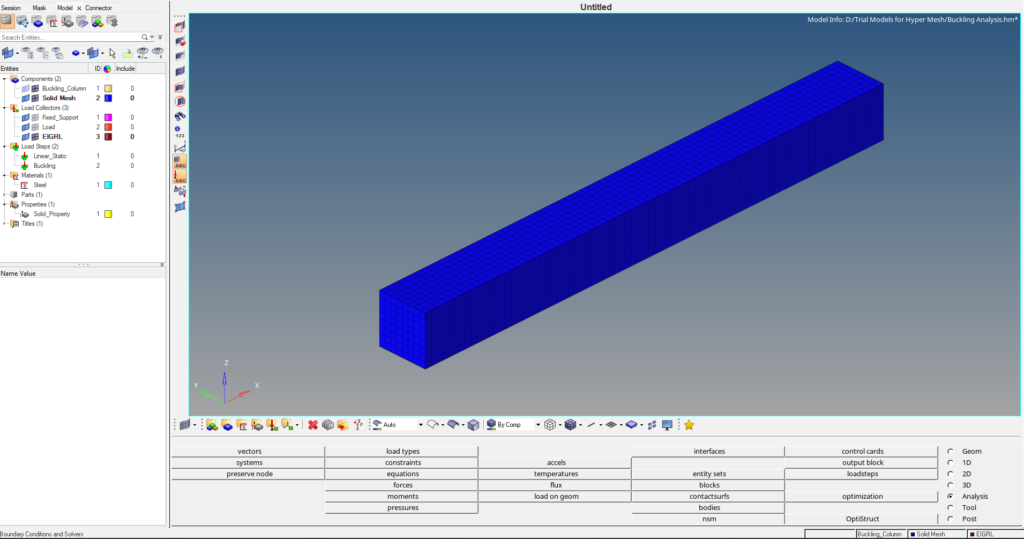
Analysis Setup
We now have to apply material and property and create load steps.
We will create a property load collector named Solid Property with card image PSOLID. We can create the property by right-clicking on the white browser area and then going to Create -> Property. Then create a material load collector named Steel by again going to the white browser area, right-clicking on it, and going to Create -> Material. We will be using steel for this tutorial, it is the material whose values are available by default in Hypermesh.
Next, we have to create a load step named Linear Static for Linear Static Analysis. We can do this by right-clicking on the white browser area and then going to Create -> Load Step. Select the analysis type as Linear Static and reference the Fixed_support and Load collectors in the SPC and load fields in this load step. After this, we need to create another load step named buckling for buckling analysis. Create a new load step by following the steps followed before, and then select the analysis type as buckling and reference the EIGRL load collector in the method(struct) field and the constraint load collector in the SPC field.
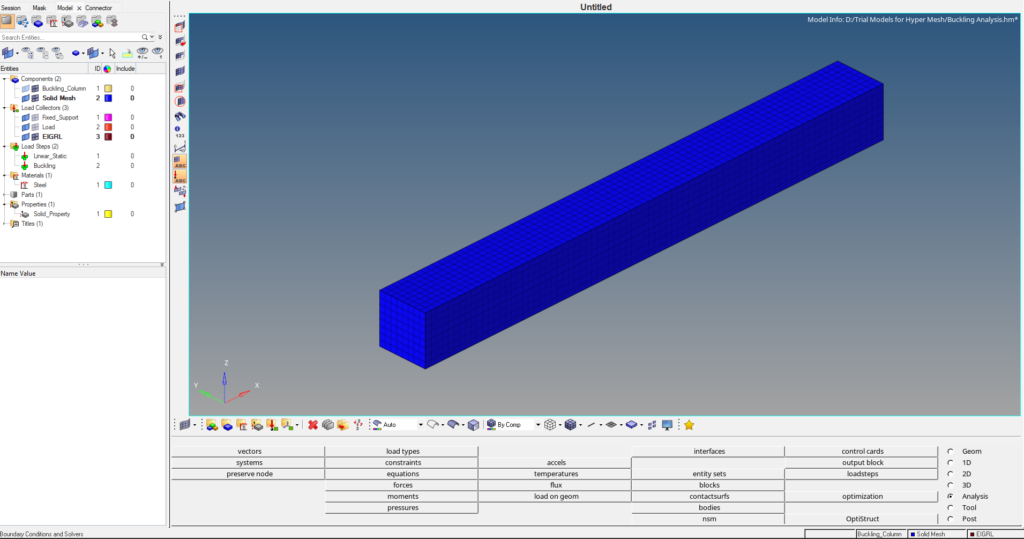
Performing Analysis
To perform the analysis, we will need to export the Nastran BDF file. For this, we can go to File -> Export -> and then select the file type as Nastran and select the location and the name for exporting the file, as shown in the image below.

Once we export the BDF file, we then have to select the file in the Nastran solver and run it as shown in the image below.

Output
Once the solver run is completed, we can view the output by opening Hyperview and selecting the bdf and op2 file.
To visualize the results, we can go to Results, which will open Hyperview. We can analyze the deformation of the structure under different load conditions as shown in the image below.
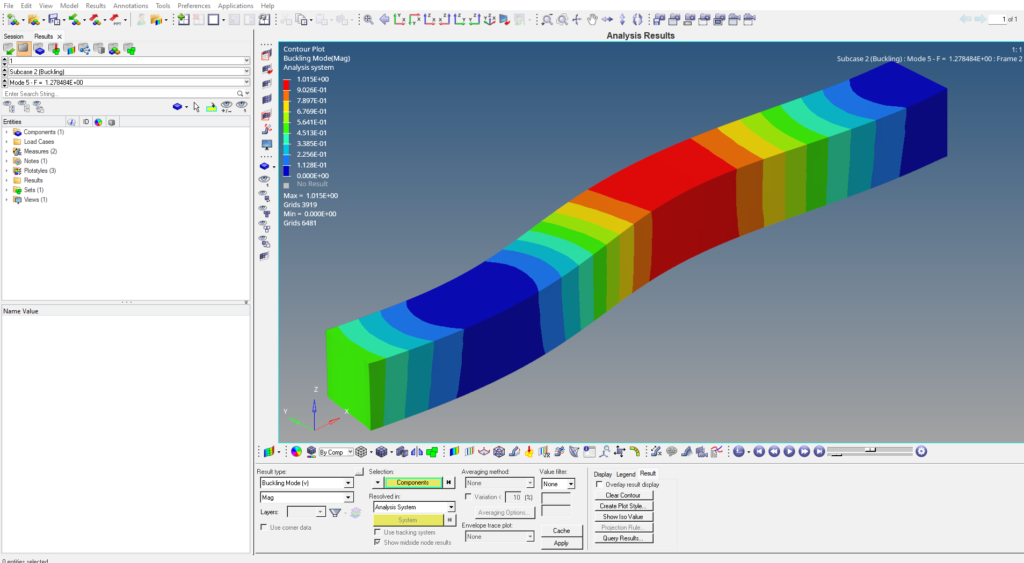
So to summarise what we have done in this tutorial:
- Create a meshed model of the buckling column.
- Apply the material and property to the model.
- Apply boundary conditions.
- Create two load steps, one for linear static analysis and the other for linear buckling analysis.
- Run the model in the solver to view the results.
This is all for this post. See you all in the next post. Don’t forget to follow my Facebook and Instagram pages. Till then keep learning.
